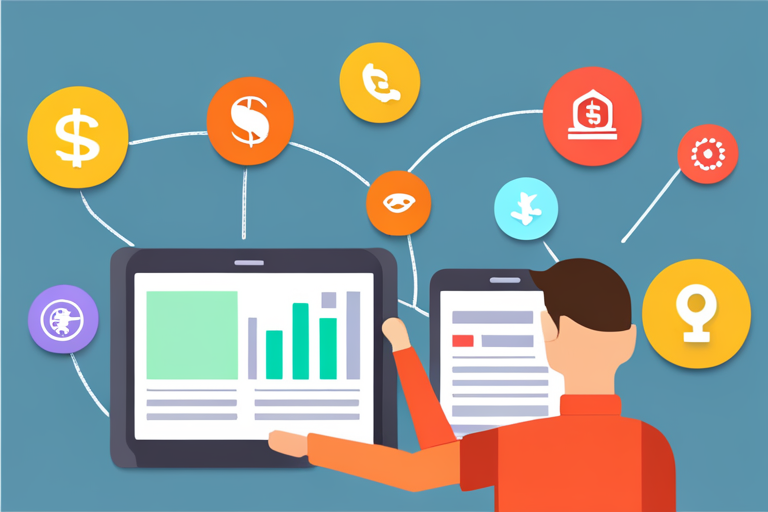A Comprehensive Guide to the Top Finance Software for Small Businesses: Simplify Your Financing Process

A Comprehensive Guide to the Top Finance Software for Small Businesses: Simplify Your Financing Process
Welcome to our comprehensive guide on the top finance software for small businesses. In this guide, we will provide you with deep insights into the world of finance software, offering actionable advice and forward-thinking perspectives to help simplify your financing process. Whether you are a startup entrepreneur or a seasoned business owner, this guide is designed to be your go-to resource for navigating the complex landscape of financial management.
Why Finance Software Matters
Effective financial management is crucial for the success of any small business. It allows you to track your income and expenses, manage cash flow, create budgets, generate financial reports, and make informed decisions based on real-time data. However, manually handling these tasks can be time-consuming and prone to errors.
This is where finance software comes in. By automating repetitive tasks and providing powerful tools for analysis and reporting, finance software enables you to streamline your financial processes and gain better control over your business finances. With the right software solution in place, you can save time, reduce costs, improve accuracy, and make smarter financial decisions.
Choosing the Right Finance Software
When it comes to selecting finance software for your small business, there are several factors you need to consider:
Features: Look for software that offers a comprehensive set of features tailored to meet your specific needs. Common features include bookkeeping, invoicing, expense tracking, budgeting, payroll management, tax preparation, and financial reporting.
Ease of Use: The software should have an intuitive interface that is easy to navigate even if you don’t have a background in accounting or finance. Look for user-friendly dashboards and customizable workflows that fit your business requirements.
Integration: Consider whether the software integrates with other tools or platforms you use in your business such as CRM systems or e-commerce platforms. Seamless integration can save you time by eliminating the need for manual data entry and ensuring data consistency across different systems.
Scalability: Choose software that can grow with your business. As your business expands, you may need additional features or the ability to handle higher transaction volumes. Make sure the software can accommodate your future needs without requiring a costly migration.
Security: Protecting your financial data is of utmost importance. Ensure that the software provides robust security measures such as encryption, user access controls, and regular backups to safeguard your sensitive information.
Top Finance Software for Small Businesses
Now let’s dive into some of the top finance software options available for small businesses:
| Software | Key Features | Pricing |
|---|---|---|
| QuickBooks Online | Bookkeeping, Invoicing, Expense Tracking, Reporting | Starts at $25/month |
| Xero | Accounting, Invoicing, Payroll Management, Reporting | Starts at $20/month |
| FreshBooks | Invoicing, Time Tracking, Expense Management, Reporting | Starts at $15/month |
| Wave Financial | Accounting, Invoicing, Receipt Scanning, Reporting | Free (with optional paid add-ons) |
These are just a few examples of popular finance software solutions available in the market. Each software has its own strengths and weaknesses, so it’s important to evaluate them based on your specific requirements and budget.
Taking Action: Implementing Finance Software
Once you have chosen the right finance software for your small business, it’s time to implement it effectively. Here are some steps to get started:
Set Up Your Accounts: Configure your chart of accounts and enter all relevant financial information into the software. This includes bank account details, credit card accounts, vendor information, and customer details.
Import Data: If you have existing financial data in spreadsheets or other accounting systems, consider importing it into the new software to avoid manual data entry. Most finance software solutions provide import tools or integration options to streamline this process.
Customize Settings: Tailor the software settings to match your business requirements. This includes setting up tax rates, payment terms, invoice templates, and other preferences that align with your branding and operational needs.
Train Your Team: If you have employees who will be using the finance software, provide them with proper training to ensure they understand how to use the software effectively and efficiently. This will help maximize the benefits of automation and minimize errors.
Regularly Review and Analyze: Take advantage of the reporting and analysis features offered by the software to gain insights into your business’s financial performance. Regularly review key metrics such as cash flow, profitability, and accounts receivable/payable to make informed decisions.
Schedule a Demo with Fundingo
Ready to simplify your financing process? Schedule a demo with Fundingo today! As a leading provider of finance software for small businesses, Fundingo offers a comprehensive suite of features designed to streamline your financial management tasks. Visit our contact us page to schedule a demo or call us directly toll-free at (877) 227-7271.
With Fundingo by your side, you can take control of your finances and focus on growing your business with confidence!